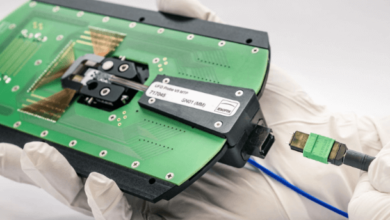The Role of QA in Modern Software Development

QA is essential to modern software development. The Quality Assurance process encompasses the structured monitoring and evaluation of various elements within a project, service, or facility to maximize the likelihood that minimum quality standards are consistently met throughout the production process.
Implementing a comprehensive QA protocol enables organizations to evaluate software products during the active development phase, facilitating the prompt identification of bugs and defects. Additionally, QA offers valuable opportunities to optimize UX design, resulting in a more seamless user experience at launch. By adopting effective QA practices, organizations can deliver products that are consistently reliable and innovative, reinforcing a robust brand reputation.
This article will discuss different QA processes and explain why suited QA is essential to successful software product development in the digital age.
What is Quality Assurance?
QA is a structured process for assessing, inspecting, and verifying the quality of a web product at the time of design, at the preliminary and the final stages of the creation process. This examines the formulation of quality assurance standards with stringent guidelines that must be followed throughout the development process to guarantee the quality of the products in each phase. These standards may be proprietary, defined by the organization, or aligned with external regulations and guidelines, such as ISO standards. Organizations often engage QA auditors, whether independent or in-house, to verify compliance with these established criteria.
QA necessitates a high level of collaboration across various departments within an organization. To ensure the smooth progression of product development, members from diverse teams need to engage closely with the QA team in the planning and execution of tests. This collaborative methodology enhances efficiency by facilitating the seamless integration of features developed by different teams into the final product. Customers may also contribute to the QA process by participating in product testing, such as beta testing, and providing valuable feedback.
QA ensures Software meets Quality Standards Consistently
The need to ensure quality in software development cannot be overstressed since it provides a checkpoint to enable the right approach for defining an efficient way of dealing with defects from the initial stage of the life cycle to the final. Using extensive testing techniques and good coding standards, the QA teams ensure that the software does the expected operations and meets the users’ expectations together with the required standards.
Regular evaluations facilitate the early detection of potential issues during the development process, enabling timely corrective actions to prevent escalation, reducing costs, and enhancing time-to-market. Moreover, the consistency of quality assurance efforts promotes trust among stakeholders, including developers, project managers, and end-users. By rigorously evaluating software against predefined benchmarks, QA instills confidence that the final product is reliable and efficient.
- Establishes testing protocols for consistent software quality assurance.
- Identifies and reports bugs during the software development lifecycle.
- Verifies functionality meets requirements before release to users.
- Conducts regression testing to prevent new issues from arising.
- Collaborates with developers for continuous improvement and feedback.
- Ensures compliance with industry standards and regulations for software.
Early Testing Identifies Issues Promptly
Regular testing should be carried out by the development team to check for possible problems at a time when they are easy to rectify. More importantly, such an approach allows teams to fix issues in the earlier stages before they turn into complex, time-consuming, and expensive issues. If testing is introduced right from the onset of the software development process, then any inadequacies, whether in the design or the implementation of the software, can be easily detected before proceeding to other phases where such defects could be disastrous.
Integrating early testing methodologies, including unit testing and continuous integration, empowers developers to uphold superior code quality while cultivating a culture of accountability. This focus on early detection facilitates efficient resource allocation and aligns development initiatives with business objectives, ultimately ensuring that the final product is delivered with speed and reliability.
- Detects defects before the product reaches the end user.
- Ensures functionality aligns with project requirements and specifications.
- Saves time and costs by addressing issues early.
- Facilitates smoother integration with development processes and teams.
- Enhances overall product quality and user satisfaction.
- Encourages proactive approach to software reliability and performance.
QA enhances User Experience Significantly
Ensuring quality is essential in improving user experience through methodically recognizing and resolving issues that could hinder usability or functionality. By thoroughly assessing software products with different testing methods, QA teams can pinpoint particular areas where users may encounter difficulties or annoyance.
Moreover, QA supports a user-focused method by integrating real-life testing situations and input in the development phase. By understanding how the end-user perceives things, QA teams can push for design enhancements and feature improvements that match what users are looking for.
- Identifies and fixes bugs before product release.
- Ensures functionality meets user requirements and expectations.
- Enhances product usability through thorough testing processes.
- Increases customer satisfaction and trust in the product.
- Reduces costs by addressing issues early in development.
- Supports continuous improvement through feedback and testing cycles.
Automation Increases Testing Efficiency and Speed
The use of automation in testing enhances the effectiveness and time taken in performing the quality assurance activities. Automated testing tools help teams perform frequently repetitive and time-consuming test cases quickly, thus reducing the level of manual involvement in tests and enabling the identification of more problems. This type of optimization allows quality assurance professionals to focus on the more complicated and essential parts of the software, including exploratory testing and performance assessments, which require human skills, and knowledge.
Furthermore, the swift execution of automated tests enhances feedback loops within the development cycle. By supporting continuous integration and continuous deployment (CI/CD) practices, automation enables the timely identification and resolution of defects, reducing the risk of delayed releases.
- Reduces manual testing errors significantly.
- Accelerates feedback loops for developers.
- Enhances test coverage across applications.
- Frees up resources for exploratory testing.
- Supports continuous integration and delivery processes.
- Enables faster release cycles and updates.
The Role of QA in Modern Development with Cloud Tools
In contemporary software development, particularly with cloud technologies, QA assumes a crucial role in verifying that applications fulfill both functional requirements and maintain reliable performance across various conditions. Scenario testing, an essential aspect of QA, enables teams to replicate real-world usage situations in diverse environments.
This practice is even more crucial when the cloud is integrated as the majority of performance is determined by elements such as latency, load, and user interactions in these applications. Using the concept of detailed scenario techniques, quality assurance teams stand to have the opportunity to identify potential problems during the development phase and not when the product is almost complete.
LambdaTest is a testing platform powered by AI that allows for both manual and automated testing on over 3,000 actual devices, browsers, and operating system combinations. Automating repetitive tasks enhances QA processes on different browsers and operating systems, leading to time and resource savings. The following are some of its notable features:
- Utilize a wide array of browsers and operating systems for thorough testing.
- Parallel Testing involves running numerous tests at the same time in order to increase efficiency.
- Effortlessly integrates with leading test automation frameworks, making the testing process easier.
- Optimize bug tracking and resolution by using video recording and logs.
- Provides a flexible lab with a diverse selection of actual Android and iOS devices to improve mobile testing capabilities.
Continuous Integration relies on Effective QA
Effective quality assurance is essential for the successful implementation of continuous integration. It ensures that each code change undergoes thorough testing before integration into the main branch. However, this approach allows the defects evident in the development stage to be detected and solved before they reach production, enormously reducing the chance of defects in the product.
Furthermore, the synergy between QA and continuous integration promotes a collaborative environment that facilitates prompt feedback and iterative improvements. This collaboration enhances the reliability of software releases and empowers teams to innovate more confidently, assured by the robust safety net established through ongoing testing.
- Automated testing ensures quick feedback on code changes.
- Continuous integration identifies bugs early in the development process.
- QA helps maintain software quality and user satisfaction.
- Collaboration between teams enhances communication and reduces errors.
- Regular testing cycles improve overall project efficiency and reliability.
- Documentation facilitates knowledge transfer and future testing efforts.
QA Collaborates with Development Teams closely
The successful collaboration between quality assurance and development teams is critical for attaining superior software quality standards. Through joint planning sessions and regular communication, quality assurance professionals can align testing strategies with development objectives and timelines. This close partnership cultivates a mutual understanding of project requirements, enabling quality assurance to offer valuable insights during the design and implementation phases.
Furthermore, integrating QA into the daily workflows of development teams promotes a culture of shared responsibility for quality. This collaborative approach encourages developers to assume ownership of their work and consider quality implications at every development lifecycle stage.
- Participate in sprint planning and backlog refinement sessions.
- Review requirements for testability and clarity before development starts.
- Provide early feedback on prototypes and design mockups.
- Collaborate on automated test script development with developers.
- Conduct joint debugging sessions to resolve issues efficiently.
- Share insights from testing to improve future development processes.
Read also: Mastering Cross Browser Testing: Challenges and Solutions
Comprehensive Testing reduces Post-Release Defects
Comprehensive testing throughout the development lifecycle is essential for identifying and addressing defects before product launch. Through different methodologies such as unit testing, integration testing, and end-to-end testing, the QA teams can confirm that software components are working as desired. This way, one gets to detect potential problems that may be present and promptly handle them, avoiding defects that may come up after release.
- Identifies bugs before software release.
- Ensures software meets quality standards.
- Enhances user experience and satisfaction.
- Saves time and costs post-release.
- Promotes continuous improvement in development.
- Builds trust with stakeholders and users.
Conclusion
QA is an undervalued and potentially significant task in the software development procedure. Despite the prevalence of software failures, there has been limited progress in enhancing the significance of the quality assurance role within the industry. In the software development industry, it is essential to enhance the role of quality assurance to attain the professional recognition it deserves.
The increasing demand for rapid market delivery has shifted the focus towards both “Quality” and “team accountability.” This evolution necessitates that testers expand their responsibilities beyond mere planning and execution of tests. As a result, the future of quality assurance is being shaped by key factors such as Agile methodologies, Artificial Intelligence (AI), and codeless automation testing.




